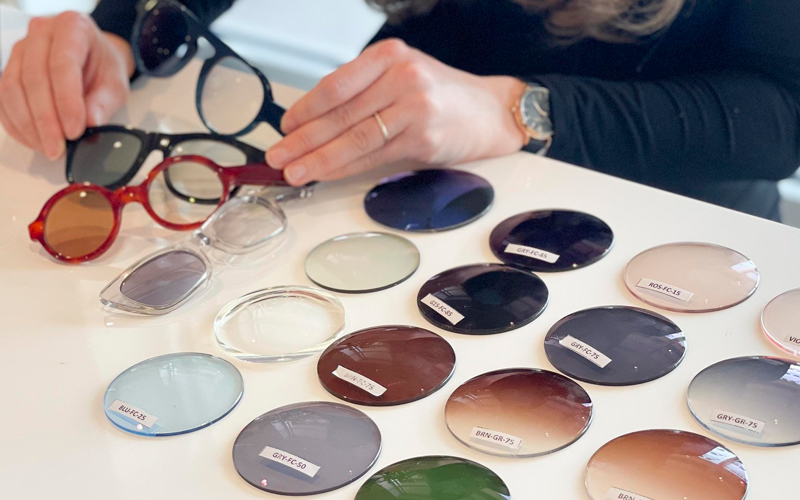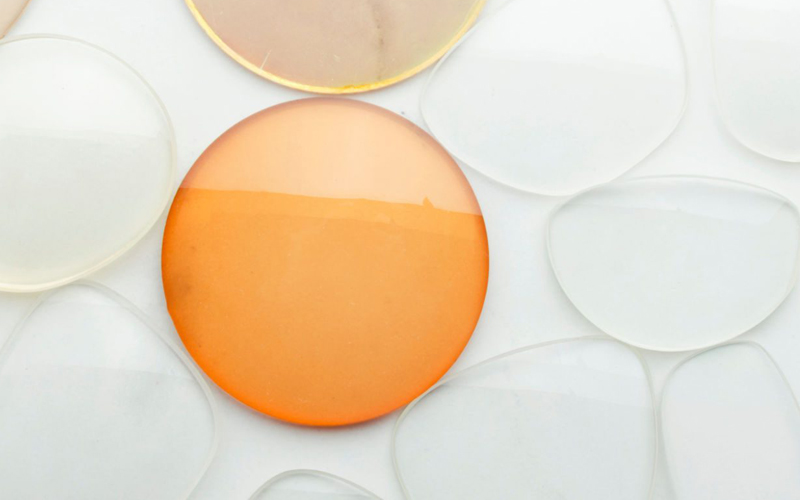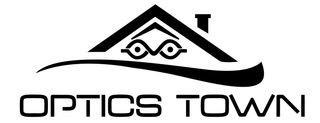Selecting the right eyeglass lens material is essential for both visual clarity and comfort. With options like plastic, polycarbonate, and high-index lenses, it’s important to understand their differences to find the best fit for your prescription and lifestyle.
This guide will walk you through the advantages and disadvantages of each material, helping you make an informed choice for your next pair of glasses.

Understanding Eyeglass Lens Materials
When choosing lenses, consider these key factors:
✔ Thickness & Weight – Lighter lenses are more comfortable for all-day wear.
✔ Impact Resistance – Essential for kids, athletes, and active individuals.
✔ Optical Clarity – Higher-quality materials provide better vision correction.
✔ Scratch & UV Protection – Helps preserve lens quality and eye health.
Each lens material offers different levels of durability, weight, and cost, making it important to select one that fits your needs.
Types of Eyeglass Lens Materials

1. Plastic (CR-39) Lenses
✅ Pros: Affordable, lightweight, good optical clarity.
❌ Cons: Less impact-resistant, prone to scratches without coating.
Plastic lenses are a popular budget-friendly option, offering good clarity and UV protection. However, they are less durable than polycarbonate or glass and may not be ideal for active users.
💡 Best For: Everyday wear, low prescriptions, and budget-conscious buyers.
2. Polycarbonate Lenses
✅ Pros: Lightweight, highly impact-resistant, built-in UV protection.
❌ Cons: Slightly lower optical clarity compared to plastic or glass.
Polycarbonate lenses are 10x more impact-resistant than plastic, making them a top choice for children, athletes, and safety glasses. They also work well with semi-rimless and rimless frames due to their strength.
💡 Best For: Active individuals, kids, safety glasses, and sports eyewear.
3. High-Index Lenses
✅ Pros: Ultra-thin, lightweight, excellent optical clarity.
❌ Cons: More expensive, may require anti-reflective coating.
High-index lenses are perfect for strong prescriptions, reducing lens thickness and weight while maintaining crisp vision. They’re also a stylish option for those who want thinner glasses.
💡 Best For: High prescriptions (-4.00 or higher), professional and fashion-conscious wearers.
4. Trivex Lenses
✅ Pros: Impact-resistant, lightweight, better clarity than polycarbonate.
❌ Cons: More expensive than standard plastic lenses.
Trivex lenses combine the durability of polycarbonate with better optical quality. They’re often used in safety glasses and military eyewear due to their strength.
💡 Best For: Active users, safety eyewear, and those needing both durability and clarity.
5. Glass Lenses
✅ Pros: Superior clarity, naturally scratch-resistant.
❌ Cons: Heavy, breakable, limited frame options.
Glass lenses offer unmatched optical clarity, but their weight and fragility make them less popular today. While they resist scratches well, they’re not ideal for high-impact lifestyles.
💡 Best For: Those prioritizing clarity and durability over lightweight comfort.
Best Lens Materials Based on Your Needs
👓 Best for Durability:
🔹 Polycarbonate or Trivex – Perfect for kids, sports, and safety glasses.
💡 Best for Lightweight Comfort:
🔹 High-Index or Polycarbonate – Ideal for strong prescriptions and all-day wear.
🌞 Best for Outdoor Protection:
🔹 Polycarbonate, Trivex, or High-Index with UV Coating – Reduces sun damage.
📱 Best for Digital Screen Users:
🔹 Any material with a Blue Light Filter – Reduces eye strain and glare.
Factors to Consider When Choosing a Lens Material
1. Your Prescription Strength
✔ Low prescriptions (-1.00 to -3.00): Plastic (CR-39) is sufficient.
✔ Moderate to high prescriptions (-4.00+): High-index lenses provide a thinner, lighter solution.
2. Your Lifestyle & Activities
✔ Active individuals & kids: Polycarbonate or Trivex for impact resistance.
✔ Office workers & students: Blue light blocking coatings help reduce digital strain.
✔ Fashion-conscious users: High-index lenses offer a sleek, thin appearance.
3. Budget Considerations
✔ Affordable option: Plastic (CR-39).
✔ Mid-range durability: Polycarbonate.
✔ Premium thin & light choice: High-Index.
Lens Coatings & Enhancements to Consider
To improve durability and comfort, consider adding these coatings:
✔ Anti-Scratch Coating – Protects against everyday wear and tear.
✔ UV Protection – Essential for long-term eye health.
✔ Anti-Reflective Coating – Reduces glare and improves night vision.
✔ Blue Light Filter – Reduces screen-related eye strain.
Conclusion
Choosing the right eyeglass lens material depends on your prescription, lifestyle, and budget. Whether you need impact resistance, lightweight comfort, or premium clarity, there’s an option tailored to your needs.
📌 Best Overall Choice: Polycarbonate (for durability and comfort).
📌 Best for Strong Prescriptions: High-Index (for a thinner, lighter design).
📌 Best for Affordability: Plastic (CR-39) (for cost-effective everyday use).
💡 Still unsure? Consult an Optics Town, we have the most full types of wholesale optical frames online for option. For expert recommendations on the best lenses for you!




